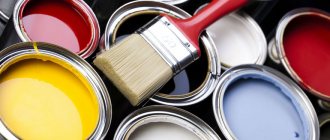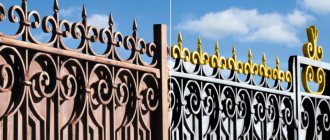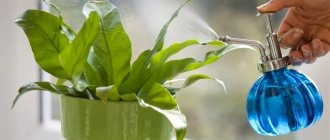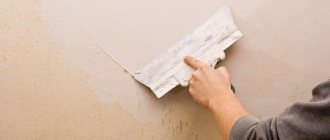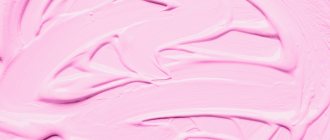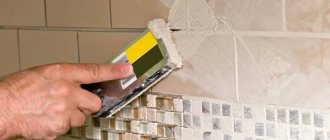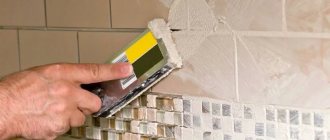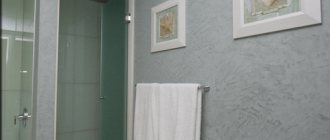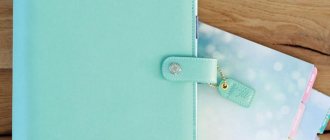Painting is required for a variety of surfaces, and is resorted to quite often, but in order for the paint to apply beautifully and be distributed evenly, it must be of the correct consistency. If the paint turns out to be too thick, then dilution of the composition is necessary. It is important to choose the right way to dilute the paint so as not to lose its properties and get a high-quality result. How to dilute paint will be discussed further.
Peculiarities
Before diluting the paint, it is necessary to understand exactly what composition can be used. Each type of coloring agent has its own characteristics, and depending on the elements included in the composition, it may not be compatible with a number of diluting agents.
The wrong choice of how to dissolve the paint can lead to its damage. If the incoming substances are incompatible, a chemical reaction may occur that will worsen its properties.
You can dissolve paint and varnish material using universal means. When using them, they emit a pungent odor; you must follow safety rules to avoid health problems.
Before diluting the paint, it is necessary to understand exactly what composition can be used.
Bitumen mixtures
Bituminous varnish is a mixture of a special grade of bitumen, various resins and oils. After drying, a durable black film is formed on the surface, moisture-resistant and impervious to chemical attack. It is considered a fairly new material in household use. Belongs to the inexpensive category. It is often used as an anti-corrosion protective layer.
For wooden surfaces it is used when there is no need to emphasize the natural texture of the base (instead of paints). Bituminous material has found application as a decorative coating for the effect of aging surfaces (patina). Another unique feature of bitumen mixtures is cold gluing. The bitumen solution is diluted with white spirit.
To prevent it from thickening during storage, the container must be airtight. The storage location should be dark (without direct sunlight), with moderate temperature and humidity.
Bituminous varnish protects the surface very well from moisture and chemical influences, diluted with white spirit
Solvent and thinner: what is the difference
There is a difference between a solvent for nitro paints and other paints and a thinner. The two substances have different effects on the paint and make different adjustments to its properties. Before diluting thick paint, you need to understand this issue.
The solvent can dissolve the enamel particles, after which the solvents evaporate and the material weakens. Thinners dilute the paint, and after their use a smooth film appears on the surface.
As a standard, mixtures of solvent substances are used, and they are numbered in the names. For example, solvents P4 include toluene and acetone.
Water-based paints can also be dissolved with water. But it is important not to add too much liquid to the composition so that the paint does not become too watery, and the quality of adhesion, viscosity and hiding power is not affected.
Water-based paints can also be dissolved with water.
Details
Solvent for compositions
Nitro paints are diluted in order to be applied with a spray gun. They are usually ready for use and quite liquid. For ideal consistency, you should use solvent for nitrocellulose products R-647 (400 mg container for 87 rubles, from the TEX brand). This is a liquid that is made on an organic base, has an unpleasant aroma and is colorless. Components: alcohols, esters, and aromatic hydrocarbons. The solvent for nitro paint is introduced into the composition slowly so that all fire safety requirements are met. Fires will be contained with a foam or carbon dioxide fire extinguisher.
Application technology
The base of each material will be pre-prepared.
Metal coating instructions
The algorithm is as follows:
The metal surface should be sanded.- Use acetone, gasoline, or white alcohol to degrease metal with oil stains. If it is not possible to remove dirt with a rag, then the product can be immersed in a container with solvents, and there is even a special paste for large products.
- Apply metal primer.
- Nitro paint can be applied to a clean and dry surface, and the coating should be multi-layered.
Another instruction for wood.
Wood coating
For wood the sequence is:
- Using a spatula or sandpaper, remove resin and natural wood oils and the old layer of paint using chemical treatment.
- The wood is treated with a primer containing an antiseptic to enhance adhesion and protect the wood from rotting. Neomid 400 is suitable for interior work, and a concentrate in a ratio of 1 to 5 costs 450 rubles per 30 liters.
- The dye should be applied to the dry surface of the wood.
Helpful advice! The mirror finish and gloss on wood will be ideal if the base is pre-treated to a smooth state with fine-grained sandpaper.
Types of solvents
The separation of the agents used to dilute enamel paint occurs according to the rate of their evaporation after administration. In this case, the parameter takes into account standard conditions. So there are the following types:
- Refractory;
- Medium volatile;
- Highly volatile.
There are a large number of solvent compositions on sale. Many of them have not lost popularity for many years: gasoline, xylene, acetone, white spirit and others.
There are a large number of solvent compositions on sale.
Polyurethane mixtures
Polyurethane varnishes, paints, primers, adhesives, etc. contain polyurethane - a modern polymer. The totality of its properties surpasses such well-known materials as rubber, plastic, rubber, and metal. To obtain high-strength paint and adhesive solutions, in industrial production it (polyurethane) is mixed with special chemicals.
A lot of polyurethane varnishes are also water-based. This parquet chemistry is environmentally friendly and non-toxic.
If it is necessary to make the substance more liquid, you can use the following as a diluent for polyurethane compounds:
- toluene,
- xylene,
- acetone,
- eluents such as R-4, R-5.
It is not recommended to add alcohols, water, or type 646 eluents.
Acetone is a good thinner for polyurethane varnishes.
Consumption
To understand how much solvent is required for the entire volume of paint, you need to know the average consumption. It is important to comply with the standards for the inclusion of substances in the paint, without exceeding the maximum amount, then the desired characteristics of the diluted paint will be maintained. It is better to use containers with markings to measure quantities.
The standards standardly indicate the ratio of the substance per kilogram of paint. And the percentage indication and quantity of production is per square meter of base that will be painted.
So for oil-based paints you will need 110g/sq.m. surfaces. Other options such as solvent will be added in equal quantities with the coloring matter.
The proportion is selected according to the type of paint, so it is better to look at the instructions from the manufacturer, where dilution options should be indicated. Then you can be sure that damage to the product will not occur, and the technical characteristics will remain at the required level.
The proportion is selected according to the type of paint, so it is better to look at the instructions from the manufacturer, where dilution options should be indicated.
Yacht varnishes
Yacht (or yacht) varnish is one of the most effective means of protecting natural wood surfaces. Already from the name the features of the area where it is used are clear. At the same time, the yacht composition is excellent for woodworking inside and outside of any objects (not just boats, boats, yachts). It is impervious to moisture, temperatures, and aggressive environments.
Yacht varnish. Basic properties:
- high degree of protection of wooden structures,
- physical and mechanical immunity to the influence of external environments,
- durability, extending the life of wood.
To achieve such results, toxic chemical elements (toluene, xylene) are used in the production of the material. There are several production technologies:
- alkyd yacht (based on the organic solvent white spirit),
- urethane-alkyd yacht (the eluent is the same, but in smaller quantities),
- alkyd-urethane yacht (solvent additives are highly volatile),
- acrylates (water-based compounds).
Dilutes yacht varnish with white spirit, no more than 5% of the total volume. The solvent acts on the substance only in its fresh form. After drying, the varnished parquet coating will become impervious.
Varnish for yachts, boats, boats has high wear resistance and can also be diluted with white spirit
Adviсe
If you choose the right solvent for the paint and varnish material, then after painting cracks will not appear, the layer will not swell, or the product will not curl. To remove paint residues, it is also important to choose a suitable composition, taking into account the characteristics of the base so as not to spoil it. To easily remove a dried layer, you need to make the right efforts, trying to rub the substance deeper so that it can saturate the layer and it will come off completely.
Most compounds are hazardous to humans, so working with them must follow safety rules. General rules include the following:
- The master puts on protective gloves, goggles, and a respirator;
- If the work takes place inside, and not on the road part, on the street, then high-quality ventilation of the room is created;
- If drops get on the mucous membranes, rinse with water immediately and consult a doctor for help.
If you choose the right solvent for the paint and varnish material, then after painting cracks will not appear, the layer will not swell, or the product will not curl.
The article described how to properly dilute paint so as not to lose its technical characteristics and not have to buy a new can. The choice of product is important; they focus on the constituent components of the coloring material. If it is necessary to remove a layer, do not forget about the type of base so as not to cause damage to it.
Safety precautions
Never neglect your own safety! Especially when working with toxic vapor-forming substances such as solvents and paints. Be sure to follow the basic rules:
- personal equipment is mandatory : goggles, a respirator, gloves, and in particularly dangerous cases, a protective chemical suit.
- If the substance comes into contact with an open area of skin, immediately rinse the area with plenty of water.
- Always work in a ventilated area, otherwise you may be exposed to toxic fumes. And when using particularly aggressive substances - an explosion.
- Maintain normal room temperature Elevated temperatures, operating heating elements or open flames are prohibited conditions.
- After finishing All containers must be screwed tightly and placed in a ventilated place away from direct sunlight. Storage is allowed only in a vertical position - with the plugs facing up.
The article was written for the site.
Tags: Enamels and paints
How to revive dried paint?
It often happens that the acrylic left after painting dries out. The water evaporates and the paint loses its quality characteristics. The irreversibility of the process leads to the fact that only through dilution can the paint be revived. Just remember that it will not acquire its previous properties.
If the acrylic paint is very dry, then grind it into powder with a sharp object and then pour boiling water over it. After a few seconds it is drained and the manipulation is repeated. After sufficient heating, the paint can be stirred. True, it will no longer have a uniform structure, but it can be painted.
Some craftsmen manage to resurrect paint that has turned into a tight clot. To do this, carry out the same procedures by adding alcohol to the water. Of course, in this case there is no point in talking about good coverage.
Chemical cocktail for nitro varnish
Paul Fishbein describes nitro lacquer and its solvent as a "witch's potion." Precise selection of the ratios of ingredients is necessary, which determines whether the coating film will be smooth or with traces of a brush, and in some cases, sticky.
We provide a list of the main ingredients that make up nitro varnish
N-butyl acetate, methyl isobutyl ketone (MIBK), acetone, methyl ethyl ketone (MEK), propylene glycol monomethyl ether, ethyl acetate, ethylene glycol, and monobutyl ether serve as primary solvents. They dissolve nitrocellulose, turning the mixture into nitro varnish, which forms a coating film after drying.
Methanol, n-butanol and isopropyl alcohol are called latent solvents. Of these, the last two evaporate more slowly than primary solvents and give the coating time to level, disappear brush marks and release bubbles.
Toluene and xylene dilute the composition, making it less viscous. They also reduce shrinkage of the drying film, preventing the appearance of cracks, improve adhesion and make the composition lighter, reducing yellowness.
